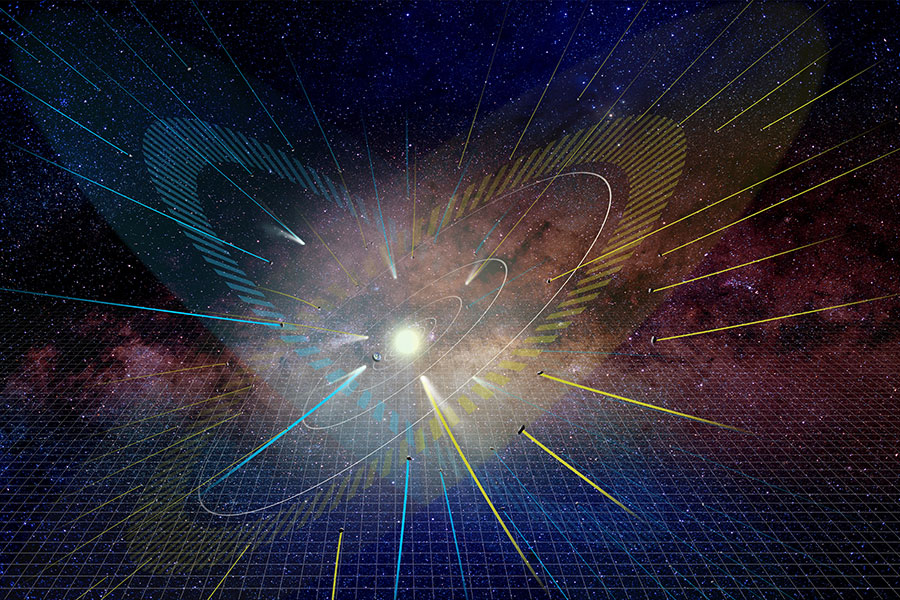
Nothing built by human hands has ever traveled faster than NASA's Parker Solar Probe. In late April, it smashed two wild space records. It was clocked at over 531,000 km/hour as it zipped through the sun's outer atmosphere.

Almost all the objects orbiting the sun live in a particular plane. But a recent analysis of long-period comets reveals a second plane and it may be populated with comets.

The sun goes through a regular 11-year cycle, swinging between periods of dormancy and periods of activity. Scientists have just announced that the sun will be ramping up in activity over the next few years.

GREGOR, the largest solar telescope in Europe, has obtained unprecedented images of the fine-structure of the Sun. Now, the Sun can be observed at a higher resolution than before from Europe.

The Solar Orbiter project, a collaboration between the European Space Agency and NASA, has begun a critical new stage of the mission after the probe's first close encounter with the Sun.

The planet’s extreme daytime heat combined with the super-cold (minus 200-degree Celsius) temperatures in the permanently shadowed craters might be acting like an “ice-making chemistry lab.”

A NASA-supplied Atlas 5 rocket launched the European Space Agency’s Solar Orbiter spacecraft 9 February, kicking off an innovative mission to study the Sun in unprecedented detail, complementing close-in observations by NASA’s Parker Solar Probe.

The Daniel K. Inouye Solar Telescope (DKIST) recently took its first image which reveals an unprecedented level of details. These images provide a close-up view of the turbulent plasma arranged in a pattern of cell-like structures.
Astronomers spotted a magnetic explosion on the surface of the sun unlike anything they've ever seen before. Although it was initially theorized about 15 years ago, this was their first direct observation of it thanks to NASA's Solar Dynamics Observatory.

Since its 2018 launch, NASA's Parker Solar Probe (record-holder for closest-ever spacecraft to the Sun) has finished three of 24 planned passes through never-before-explored parts of the Sun's atmosphere.

The new research has shed new light on the exotic but poorly understood 'fourth state of matter,' known as plasma, which could hold the key to developing safe, clean and efficient nuclear energy generators on Earth.

An extreme form of solar storm, known as a solar proton event (SPE) struck our planet in 660 BCE. If an event of such magnitude were to happen today, it would likely wreak havoc on our technological infrastructure.

This year, space fans will be treated to two lunar mission, the Apollo 11 anniversary, some lunar and solar eclipses, and brand-new spacecrafts heading for the ISS.

Recent research suggests that most, if not all, stars are born with a binary twin. Our Sun is a solitary star, but there's evidence to suggest that it did have a binary twin, once upon a time and it might have just been found.

No human-made object has gotten this close to the Sun. The Parker Solar Probe broke a 22 year old record by getting to within 43 million km of the Sun.